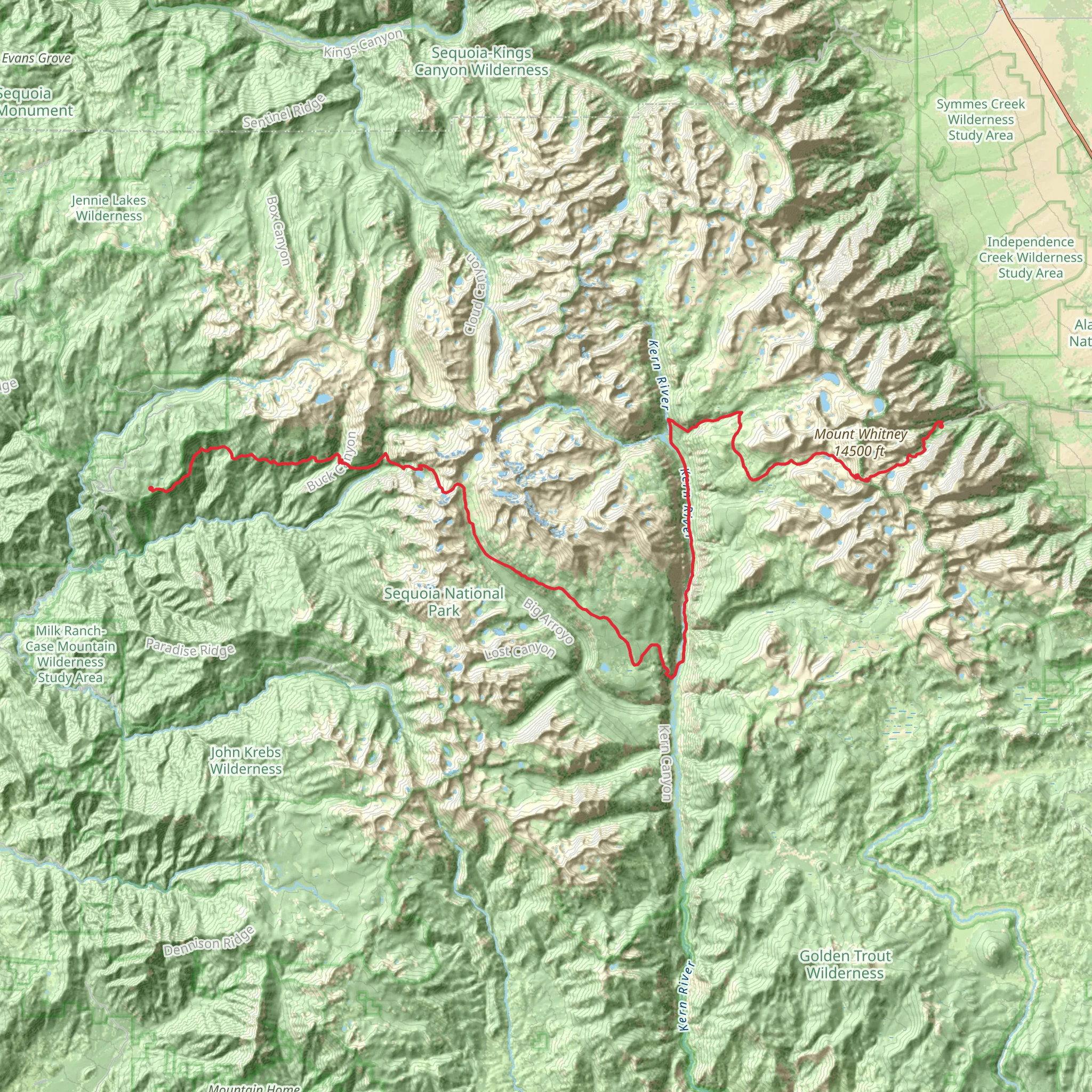Download
Preview
Add to list
More
99.0 km
~7 days
4332 m
Multi-Day
“Embark on a majestic Sierra Nevada odyssey culminating in Mount Whitney's summit, teeming with history, wildlife, and awe-inspiring vistas.”
Embarking on the Crescent Meadows to Whitney Portal trail, hikers will traverse approximately 99 kilometers (about 61.5 miles) through the heart of the Sierra Nevada, culminating in an ascent of Mount Whitney, the highest peak in the contiguous United States. With an elevation gain of around 4,300 meters (approximately 14,107 feet), this journey is a challenging endeavor that rewards with breathtaking vistas and a sense of accomplishment.
Getting to the Trailhead
The trailhead at Crescent Meadows is located near Tulare County, California, within the Sequoia National Park. For those arriving by car, the closest significant landmark is the Giant Forest Museum, from which Crescent Meadows is just a short drive. Public transportation options are limited, but during the summer months, the Sequoia Shuttle operates from nearby cities to the park, requiring a reservation.
The Journey Begins
Setting out from Crescent Meadows, hikers are immediately enveloped by the grandeur of the Giant Forest, home to some of the world's largest trees. The first section of the trail is relatively gentle, allowing for acclimatization to the altitude and the opportunity to marvel at the ancient sequoias.
High Sierra and Alpine Lakes
As the trail progresses, the terrain becomes more rugged, ascending into the High Sierra where alpine lakes dot the landscape. Hikers will pass by the picturesque Hamilton Lake and Precipice Lake, the latter known for its striking blue-green waters framed by sheer granite cliffs—a scene famously captured by Ansel Adams.
Forester Pass
One of the most significant milestones on the route is Forester Pass, which at 4,009 meters (13,153 feet) is the highest point on the Pacific Crest Trail. The approach to the pass is strenuous, with switchbacks and potentially snow-covered paths, even in summer. Navigation tools like HiiKER can be invaluable for staying on track through this challenging section.
Mount Whitney Ascent
The final push to Mount Whitney is the most demanding part of the hike, with the last 17 kilometers (about 10.5 miles) involving a steep climb to the summit at 4,421 meters (14,505 feet). The trail here is well-traveled, as it converges with the Mount Whitney Trail, popular among day hikers and those with permits for overnight stays.
Historical Significance
The region is rich in history, with the trail itself following paths once used by indigenous peoples. The area became more widely known after the California Gold Rush, and later, the creation of Sequoia National Park in 1890 helped to protect the landscape and its natural wonders.
Wildlife and Flora
Throughout the hike, the diverse ecosystems of the Sierra Nevada are on full display. Hikers may encounter mule deer, black bears, and a variety of bird species. The flora ranges from the giant sequoias of the lower elevations to the hardy, high-altitude pines and wildflowers that bloom in the short alpine summer.
Preparation and Safety
Due to the trail's difficulty, hikers should be well-prepared with appropriate gear, including bear canisters for food storage. Weather can change rapidly, and snow can be present year-round at higher elevations, so layered clothing and a reliable weather app are essential. Water sources are available but should be treated before drinking.
Conclusion
The Crescent Meadows to Whitney Portal trail is a true test of endurance and a showcase of the Sierra Nevada's natural splendor. With careful planning and respect for the environment, hikers can embark on a journey that is both challenging and deeply rewarding.
Comments and Reviews
User comments, reviews and discussions about the Crescent Meadows to Whitney Portal, California.
5.0
average rating out of 5
5 rating(s)

